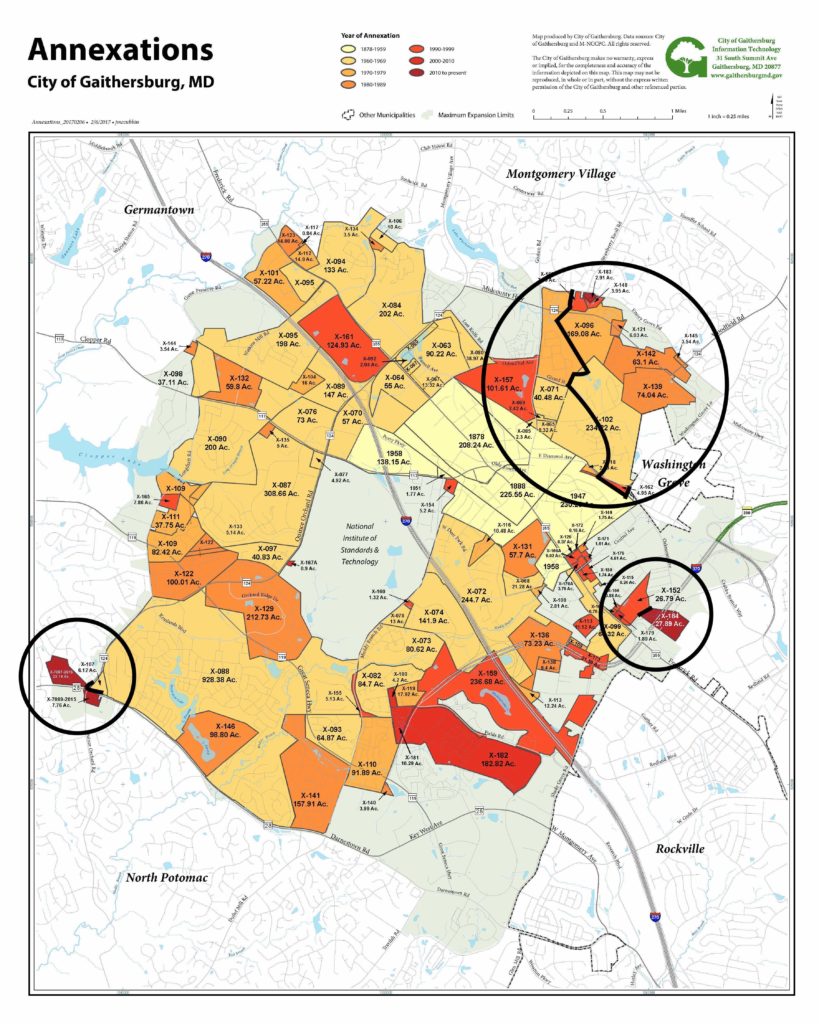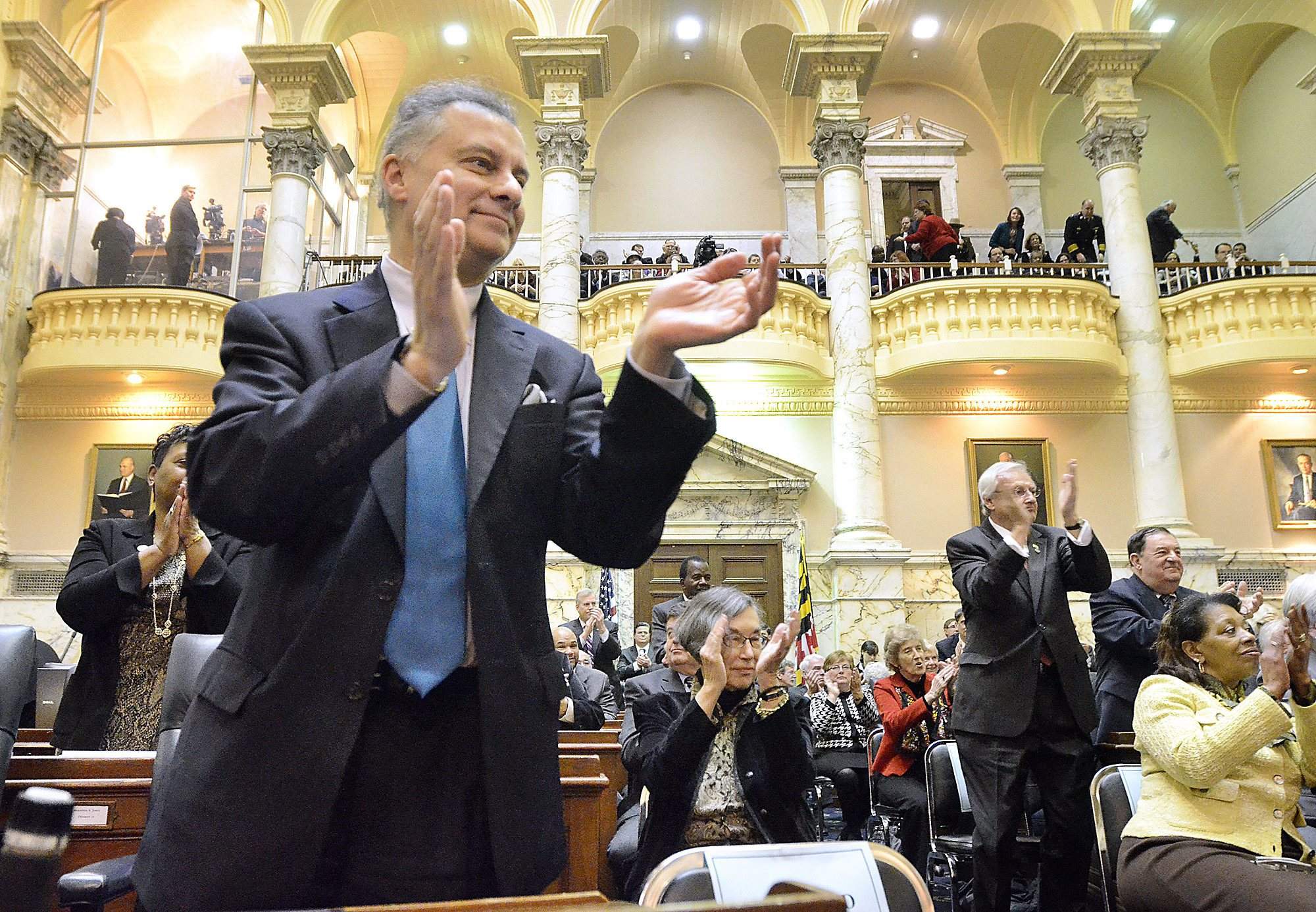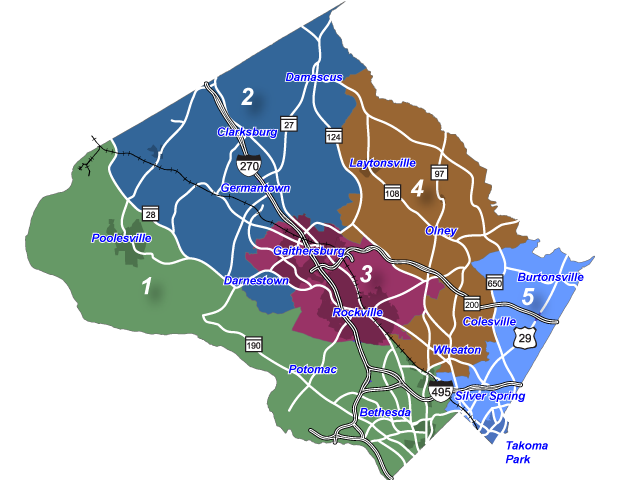The portion of the Legislative Redistricting Plan for Montgomery County takes a status quo approach. However, it still might violate the Maryland Constitution.
What’s Not a Problem
The major change from the current arrangement is that district 9A, centered in Howard County, now takes in a portion of northern Montgomery County around Damascus. This inclusion of a portion of a ninth (!) legislative district reflects Montgomery’s growth.
It also not so coincidentally happens to aid Democratic Sen. Katie Fry Hester who exchanges a bit of very Republican Carroll County for this bit of Montgomery County. Damascus may be among the more Republican areas of Montgomery, but it is probably friendlier turf for her than the portion of Carroll she lost.
None of this should pose a problem for the plan.
What is a Problem
Instead, the potential problem centers on the new version of District 17. When drawn after the 2010 Census, the district included all of Rockville and Gaithersburg. The new version doesn’t. The dark black lines on the above map show my rough look at where the proposed legislative district boundaries cut into the City of Gaithersburg.
Over the past decade, Gaithersburg annexed areas around Quince Orchard and Shady Grove North that are not in the new D17. Larger areas of northeast Gaithersburg just west of Washington Grove are also outside D17. Most of the excised portions are in D39 but the Shady Grove North bit is in D19.
This invites a constitutional challenge because Article III, Section 4 of the Maryland Constitution states that that legislative district boundaries must give “due regard” to “the boundaries of political subdivisions.”
The Maryland Court of Appeals gave life to this provision when it invalidated the 2001 map, in part for violating too many boundaries. In particular, more districts straddled the Baltimore City and County boundary than necessary.
The Court made clear the importance of this requirement in its decision, writing: “Non-compliance with a state constitutional requirement is permitted only when it conflicts with a federal requirement or another more important Maryland constitutional requirement.”
The State might argue that hiving off part of Gaithersburg was needed so that the district was not overpopulated. But this feels like a dud. After all, the state could have just split Rockville and Gaithersburg into separate districts that included all of each municipality.
The Legislature has a couple of options short of completely redrawing the plan. First, it could redraw the map to include the currently excluded parts of Gaithersburg. Except that this change might well make the district exceed the acceptable population deviation of +/- 5%. The district is already 2.5% larger than ideal.
If this doesn’t make D17 too large, it would solve the problem and make it difficult to challenge the map on this basis. My guess is that the district would end up overpopulated, as the line drawers would otherwise have done this in the first place.
If it does make it too large, the State could try to justify the deviation as desirable to adhere to municipal boundaries. But this faces the same problem as the proposed map in that one could have just put the two big municipalities into separate districts instead.
The State could roll the dice with the proposed map as it stands. Beyond explaining that the portions sliced off Gaithersburg are small and partially not in the current districts, the State could argue that this change was needed to preserve the cores of current districts. The Special Master argued that this was one reason that the 1992 Plan, which was upheld by the Court, did not violate the Maryland Constitution.
This argument seems unlikely to fly, however, because the Court of Appeals explicitly rejected it in 2001, stating: “The premise on which the Special Master proceeded, that the due regard requirement may be subordinated to achieve a ‘rational goal,’ and the State’s argument that the provision must give way to ‘more important considerations,’ also are wrong.”
The Court goes out of its way to make clear that this provision of the Maryland Constitution limits the state’s power even though the “due regard” provision is less strongly worded than similar provisions in other states. In short, it’s there for good reason, such as limiting partisan gerrymandering, and the State cannot ride roughshod over it.
The Court might still uphold it as a de minimis (i.e. trivial) violation of the provision. It could also rule that violations of municipal boundaries are less serious than the violations of county boundaries. Baltimore City is unusual in that it is the only municipality that is also a county equivalent, so the Court could distinguish these questions about due regard for political boundaries from those at issue in its 2001 decision.
Still, it’ll make the inevitable legal challenge to the Legislative Redistricting Plan a lot more interesting if this remains in the final plan. As in 2001, a victory for plan opponents could result in a court-drawn plan because time is short before the primary.






